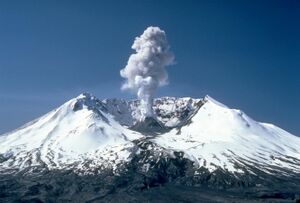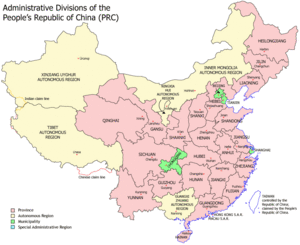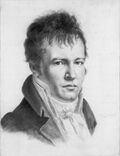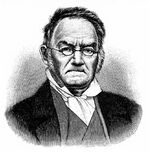Earth:Outline of geography
The following outline is provided as an overview of and topical guide to geography:
Geography – study of earth and its people.[1]
File:Map of the world by the US Gov as of 2016.svg
Nature of geography
Geography as
- an academic discipline – a body of knowledge given to − or received by − a disciple (student); a branch or sphere of knowledge, or field of study, that an individual has chosen to specialize in. Modern geography is an all-encompassing discipline that seeks to understand the Earth and its human and natural complexities − not merely where objects are, but how they have changed and come to be. Geography has been called 'the world discipline'.[2]
- a field of science – widely recognized category of specialized expertise within science, and typically embodies its own terminology and nomenclature. This field will usually be represented by one or more scientific journals, where peer-reviewed research is published. There are many geography-related scientific journals.
- a natural science – field of academic scholarship that explores aspects of the natural environment (physical geography).
- a social science – field of academic scholarship that explores aspects of human society (human geography).
- an interdisciplinary field – a field that crosses traditional boundaries between academic disciplines or schools of thought, as new needs and professions have emerged. Many of the branches of physical geography are also branches of Earth science
Branches of geography
As "the bridge between the human and physical sciences," geography is divided into two main branches:
Other branches include:
- integrated geography
- technical geography
- regional geography
Physical geography
- Physical geography – examines the natural environment and how the climate, vegetation & life, soil, water, and landforms are produced and interact.[5]
Fields of physical geography
- Geomorphology – study of landforms and the processes that them, and more broadly, of the processes controlling the topography of any planet. Seeks to understand why landscapes look the way they do, to understand landform history and dynamics, and to predict future changes through field observation, physical experiment, and numerical modeling.
- Hydrology – study the movement, distribution, and quality of water throughout the Earth, including the hydrologic cycle, water resources and environmental watershed sustainability.
- Glaciology – study of glaciers, or more generally ice and natural phenomena that involve ice.
- Oceanography – studies a wide range of topics about oceans, including marine organisms and ecosystem dynamics; ocean currents, waves, and geophysical fluid dynamics; plate tectonics and the geology of the sea floor; and fluxes of various chemical substances and physical properties within the ocean and across its boundaries.
- Biogeography – study of the distribution of species spatially and temporally. Over areal ecological changes, it is also tied to the concepts of species and their past, or present living 'refugium', their survival locales, or their interim living sites. It aims to reveal where organisms live, and at what abundance.[6]
- Climatology – study of climate, scientifically defined as weather conditions averaged over a period of time.[7]
- Meteorology is the interdisciplinary scientific study of the atmosphere that focuses on weather processes and short term forecasting (in contrast with climatology).
- Pedology – study of soils in their natural environment[8] that deals with pedogenesis, soil morphology, and soil classification.
- Palaeogeography – study of what the geography was in times past, most often concerning the physical landscape, but also the human or cultural environment.
- Coastal geography – study of the dynamic interface between the ocean and the land, incorporating both the physical geography (i.e. coastal geomorphology, geology and oceanography) and the human geography (sociology and history) of the coast. It involves an understanding of coastal weathering processes, particularly wave action, sediment movement and weather, and also the ways in which humans interact with the coast.
- Quaternary science – focuses on the Quaternary period, which encompasses the last 2.6 million years, including the last ice age and the Holocene period.
- Landscape ecology – the relationship between spatial patterns of urban development and ecological processes on a multitude of landscape scales and organizational levels.[9][10][11]
Approaches of physical geography
- Quantitative geography – Quantitative research tools and methods applied to geography. See also the quantitative revolution.
- Systems approach –
Human geography
- Human geography – one of the two main subfields of geography, it is the study of human use and understanding of the world and the processes which have affected it. Human geography broadly differs from physical geography in that it focuses on the built environment and how space is created, viewed, and managed by humans as well as the influence humans have on the space they occupy.[5]
Fields of human geography
- Cultural geography – study of cultural products and norms and their variations across and relations to spaces and places. It focuses on describing and analyzing the ways language, religion, economy, government, and other cultural phenomena vary or remain constant from one place to another and on explaining how humans function spatially.[12]
- Children's geographies – study of places and spaces of children's lives, characterized experientially, politically and ethically. Children's geographies rest on the idea that children as a social group share certain characteristics which are experientially, politically and ethically significant and which are worthy of study. The pluralization in the title is intended to imply that children's lives will be markedly different in differing times and places and in differing circumstances such as gender, family, and class. The range of foci within children's geographies include:
- Children and the city
- Children and the countryside
- Children and technology
- Children and nature,
- Children and globalization
- Methodologies of researching children's worlds
- Ethics of researching children's worlds
- Otherness of childhood
- Animal geographies – studies the spaces and places occupied by animals in human culture because social life and space is heavily populated by animals of many different kinds and in many differing ways (e.g. farm animals, pets, wild animals in the city). Another impetuses that has influenced the development of the field is ecofeminist and other environmentalist viewpoints on nature-society relations (including questions of animal welfare and rights).
- Language geography – studies the geographic distribution of language or its constituent elements. There are two principal fields of study within the geography of language:
- Sexuality and space – encompasses all relationships and interactions between human sexuality, space, and place, including the geographies of LGBT residence, public sex environments, sites of queer resistance, global sexualities, sex tourism,[19] the geographies of prostitution and adult entertainment, use of sexualised locations in the arts,[20][21] and sexual citizenship.[22]
- Religion geography – study of the influence of geography, i.e. place and space, on religious belief.[23]
- Children's geographies – study of places and spaces of children's lives, characterized experientially, politically and ethically. Children's geographies rest on the idea that children as a social group share certain characteristics which are experientially, politically and ethically significant and which are worthy of study. The pluralization in the title is intended to imply that children's lives will be markedly different in differing times and places and in differing circumstances such as gender, family, and class. The range of foci within children's geographies include:
- Development geography – study of the Earth's geography with reference to the standard of living and quality of life of its human inhabitants. Measures development by looking at economic, political and social factors, and seeks to understand both the geographical causes and consequences of varying development, in part by comparing More Economically Developed Countries (MEDCs) with Less Economically Developed Countries (LEDCs).
- Economic geography – study of the location, distribution and spatial organization of economic activities across the world. Subjects of interest include but are not limited to the location of industries, economies of agglomeration (also known as "linkages"), transportation, international trade and development, real estate, gentrification, ethnic economies, gendered economies, core-periphery theory, the economics of urban form, the relationship between the environment and the economy (tying into a long history of geographers studying culture-environment interaction), and globalization.
- Marketing geography – a discipline within marketing analysis which uses geolocation (geographic information) in the process of planning and implementation of marketing activities.[24] It can be used in any aspect of the marketing mix – the product, price, promotion, or place (geo targeting).
- Transportation geography – branch of economic geography that investigates spatial interactions between people, freight and information. It studies humans and their use of vehicles or other modes of traveling as well as how markets are serviced by flows of finished goods and raw materials.
- Health geography – application of geographical information, perspectives, and methods to the study of health, disease, and health care, to provide a spatial understanding of a population's health, the distribution of disease in an area, and the environment's effect on health and disease. It also deals with accessibility to health care and spatial distribution of health care providers.
- Time geography – study of the temporal factor on spatial human activities within the following constraints:
- Authority - limits of accessibility to certain places or domains placed on individuals by owners or authorities
- Capability - limitations on the movement of individuals, based on their nature. For example, movement is restricted by biological factors, such as the need for food, drink, and sleep
- Coupling - restraint of an individual, anchoring him or her to a location while interacting with other individuals in order to complete a task
- Historical geography – study of the human, physical, fictional, theoretical, and "real" geographies of the past, and seeks to determine how cultural features of various societies across the planet emerged and evolved, by understanding how a place or region changes through time, including how people have interacted with their environment and created the cultural landscape.
- Political geography – study of the spatially uneven outcomes of political processes and the ways in which political processes are themselves affected by spatial structures. Basically, the inter-relationships between people, state, and territory.
- Electoral geography – study of the relationship between election results and the regions they affect (such as the environmental impact of voting decisions), and of the effects of regional factors upon voting behavior.
- Geopolitics – analysis of geography, history and social science with reference to spatial politics and patterns at various scales, ranging from the level of the state to international.
- Strategic geography – concerned with the control of, or access to, spatial areas that affect the security and prosperity of nations.
- Military geography – the application of geographic tools, information, and techniques to solve military problems in peacetime or war.
- Population geography – study of the ways in which spatial variations in the distribution, composition, migration, and growth of populations are related to the nature of places.
- Tourism geography – study of travel and tourism, as an industry and as a social and cultural activity, and their effect on places, including the environmental impact of tourism, the geographies of tourism and leisure economies, answering tourism industry and management concerns and the sociology of tourism and locations of tourism.
- Urban geography – the study of urban areas, in terms of concentration, infrastructure, economy, and environmental impacts.
Approaches of human geography
- Behavioral geography
- Cognitive geography – Interdisciplinary study of cognitive science and geography
- Critical geography
- Feminist geography
- Marxist geography
- Non-representational theory
- Postcolonialism
- Post-structuralism[25] –
- Qualitative geography – qualitative research tools and methods applied to geography.
Integrated geography
- Integrated geography – branch of geography that describes the spatial aspects of interactions between humans and the natural world. It requires an understanding of the dynamics of geology, meteorology, hydrology, biogeography, ecology, and geomorphology, as well as the ways in which human societies conceptualize the environment.
Technical geography
- Technical geography – branch of geography and the discipline of studying, developing, and applying methods to gather, store, process, and deliver geographic or spatially referenced information. It is a widespread interdisciplinary field that includes the tools and techniques used in land surveying, remote sensing, cartography, Geographic Information Systems (GIS), Global Navigation Satellite Systems, photogrammetry, and related forms of earth mapping.
Fields contributing to technical geography
- Geomatics – Discipline concerned with the collection, distribution, storage, analysis, processing, presentation of geographic data or geographic information
- Photogrammetry
- Cartography
- Digital terrain modelling
- Geodesy – Science of measuring the shape, orientation, and gravity of the Earth and other astronomical bodies
- Geographic information system – System to capture, manage and present geographic data
- Geospatial
- Global navigation satellite systems represented by Satellite navigation – Any system that uses satellite radio signals to provide autonomous geo-spatial positioning
- Hydrography
- Mathematics – Field of study
- Navigation
- Remote sensing
- Surveying
Regional geography
Regional geography – study of world regions. Attention is paid to unique characteristics of a particular region such as its natural elements, human elements, and regionalization which covers the techniques of delineating space into regions. Regional geography breaks down into the study of specific regions.
Region – an area, defined by physical characteristics, human characteristics, or functional characteristics. The term is used in various ways among the different branches of geography. A region can be seen as a collection of smaller units, such as a country and its political divisions, or as one part of a larger whole, as in a country on a continent.
Continents
Continent – one of several large landmasses on Earth. They are generally identified by convention rather than any specific criteria, but seven areas are commonly regarded as continents. They are:
- 1. Africa (outline) –
- 2. Antarctica –
- 3. Australia (outline) –
- The Americas:
- Eurasia:
Subregions
Biogeographic regions
Biogeographic realm
The World Wildlife Fund (WWF) developed a system of eight biogeographic realms (ecozones):
- Nearctic 22.9 mil. km2 (including most of North America)
- Palearctic 54.1 mil. km2 (including the bulk of Eurasia and North Africa)
- Afrotropic 22.1 mil. km2 (including Sub-Saharan Africa)
- Indomalaya 7.5 mil. km2 (including the South Asian subcontinent and Southeast Asia)
- Australasia 7.7 mil. km2 (including Australia, New Guinea, and neighboring islands). The northern boundary of this zone is known as the Wallace line.
- Neotropic 19.0 mil. km2 (including South America and the Caribbean)
- Oceania 1.0 mil. km2 (including Polynesia, Fiji and Micronesia)
- Antarctic 0.3 mil. km2 (including Antarctica).
Ecoregions
Ecoregion Biogeographic realms are further divided into ecoregions. The World has over 800 terrestrial ecoregions. See Lists of ecoregions by country.
Geography of the political divisions of the World
|
|
Other regions
- Atlantic World
- Bermuda Triangle
- Pacific Rim
- Pacific Ring of Fire
History of geography
Topics pertaining to the geographical study of the World throughout history:
By period
- Ancient roads
- Ancient Greek geography
- Age of discovery
- Major explorations after the Age of Discovery
- Critical geography
- Environmental determinism
By region
By subject
By field
- History of human geography
- Earth:History of cartography – The development of cartography, or mapmaking technology
- Astronomy:History of longitude – Record of humanity's attempts to find east-west position on Earth
- History of cultural geography
- History of economic geography
- History of health geography
- History of political geography
- Earth:History of cartography – The development of cartography, or mapmaking technology
- History of physical geography
- History of regional geography
Elements of geography
Topics common to the various branches of geography include:
Tasks and tools of geography
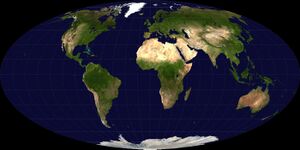
- Exploration – Process of investigating unfamiliar things
- Geocode, also known as Geospatial Entity Object Code – Geospatial coordinate system for specifying the exact location of a geospatial point at, below, or above the surface of the earth at a given moment of time.
- Geographic information system (GIS) – System to capture, manage and present geographic data
- Globe – Scale model of a celestial body
- Earth:Map – Symbolic depiction of relationships
- Earth:Cartography – Study and practice of making maps
- Earth:Outline of cartography – Overview of and topical guide to cartography
- Map projection – Systematic representation of the surface of a sphere or ellipsoid onto a plane
- Earth:Cartography – Study and practice of making maps
- Spatial analysis – Formal techniques which study entities using their topological, geometric, or geographic properties
- Engineering:Surveying – Science of determining the positions of points and the distances and angles between them
Types of geographic features
Geographic feature – component of a planet that can be referred to as a location, place, site, area, or region, and therefore may show up on a map. A geographic feature may be natural or artificial.
Location and place
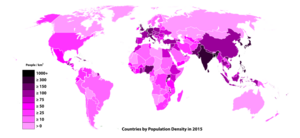
- Location –
- Absolute location
- Place
- Aspects of a place or region
- Climate
- Population
- Sense of place
- Terrain – Vertical and horizontal dimension and shape of land surface
- Topography
- Tourist attraction
- Lists of places
- Aspects of a place or region
Natural geographic features
Natural geographic feature – an ecosystem or natural landform.
Ecosystems
Ecosystem – community of living organisms in conjunction with the nonliving components of their environment (things like air, water and mineral soil), interacting as a system. These biotic and abiotic components are regarded as linked together through nutrient cycles and energy flows.
- Biodiversity hotspot
- Realm – broadest biogeographic division of the Earth's land surface, based on distributional patterns of terrestrial organisms.
- Ecoprovince – biogeographic unit smaller than a realm that contains one or more ecoregions.
- Biome
Natural landforms
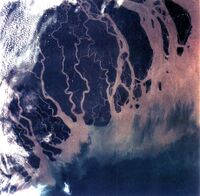
Natural landform – terrain or body of water. Landforms are topographical elements, and are defined by their surface form and location in the landscape. Landforms are categorized by traits such as elevation, slope, orientation, stratification, rock exposure, and soil type. Some landforms are artificial, such as certain islands, but most landforms are natural.
Natural terrain feature types
Natural body of water types
- Natural bodies of water
Artificial geographic features
Artificial geographic feature – a thing that was made by humans that may be indicated on a map. It may be physical and exist in the real world (like a bridge or city), or it may be abstract and exist only on maps (such as the Equator, which has a defined location, but cannot be seen where it lies).
- Engineering:Urban hierarchy – Rank of cities based on their population – ranks the structure of towns within an area.
- Finance:Financial centre
- Global city – City important to the world economy – city that is deemed to be an important node in the global economic system. Globalization is largely created, facilitated and enacted in strategic geographic locales (including global cities) according to a hierarchy of importance to the operation of the global system of finance and trade.
- Unsolved:Ecumenopolis – theoretical "world city". Will the world ever become so urbanized as to be called this?
- Engineered construct – built feature of the landscape such as a highway, bridge, airport, railroad, building, dam, or reservoir. See also construction engineering and infrastructure.
- Artificial landforms
- Earth:Artificial island – Island constructed by people
- Breakwater – Coastal defense structure – construction designed to break the force of the sea to provide calm water for boats or ships, or to prevent erosion of a coastal feature.
- Engineering:Bridge – Structure built to span physical obstacles – structure built to span a valley, road, body of water, or other physical obstacle such as a canyon, for the purpose of providing passage over the obstacle.
- Earth:Canal – Man-made channel for water – artificial waterway, often connecting one body of water with another.
- Engineering:Causeway – Route raised up on an embankment
- Earth:Levee – Ridge or wall to hold back water – artificial slope or wall to regulate water levels, usually earthen and often parallel to the course of a river or the coast.[27]
- Manmade harbor – Sheltered body of water where ships may shelter – harbor that has deliberately constructed breakwaters, sea walls, or jettys, or which was constructed by dredging.
- Engineering:Marina – Dock with moorings and facilities for yachts and small boats
- Biology:Orchard – Intentionally planted trees or shrubs that are maintained for food production
- Engineering:Parking lot – Cleared area that is intended for parking vehicles
- Engineering:Pier – Raised structure in a body of water
- Pipeline – Pumping fluids or gas through pipes
- Engineering:Port – Maritime facility where ships may dock to load and discharge passengers and cargo
- Engineering:Highway – Public road or other public way on land
- Engineering:Tunnel – Underground passage made for traffic
- Engineering:Wharf – Structure on the shore of a harbor or on the bank of a river or canal where ships dock
- Artificial landforms
- Abstract geographic feature – does not exist physically in the real world, yet has a location by definition and may be displayed on maps.
- Hardiness zone – Geographical regions defined by climatic conditions for horticultural purposes
- Time zone
- Earth:Nation – Community based on common ethnic, cultural or political identity
- Place:Administrative division – A territorial entity for administration purposes
- Place:Administrative division – A territorial entity for administration purposes – a designated territory created within a country for administrative or identification purposes. Examples of the types of administrative divisions:
- Social:Duchy – Territory, fief, or domain ruled by, or representing the title of, a duke or duchess
- Social:Emirate – A political territory that is ruled by a dynastic Muslim monarch styled emir
- Religion:Parish – Ecclesiastical subdivision of a diocese
- Cartographical feature – theoretical construct used specifically on maps that doesn't have any physical form apart from its location.
- Latitude line – Geographic coordinate specifying north–south position
- Astronomy:Equator – Circle of latitude
- Longitude line – Geographic coordinate that specifies the east-west position of a point on the Earth's surface
- Earth:Geographical pole – Points on a rotating astronomical body where the axis of rotation intersects the surface
- Latitude line – Geographic coordinate specifying north–south position
Geographic features that include the natural and artificial
- Earth:Waterway – Any navigable body of water
Geography awards
Some awards and competitions in the field of geography:
Geographical organizations
- European Geography Association
- EUROGEO-European Association of Geographers
- Gamma Theta Upsilon
- International Geographical Union
Geographical publications
Geographical magazines
- Al Arab
- Arizona Highways
- Asian Geographic
- Atlas (magazine)
- Australian Geographic
- Canadian Geographic
- Chinese National Geography
- Le Congo illustré
- GEO (magazine)
- Géographica
- Geographical
- Icelandic Geographic
- Le Mouvement Géographique
- National Geographic
- National Geographic Adventure
- National Geographic Kids
- National Geographic Traveler
- New Zealand Geographic
- Podróże
- Revista Geográfica Española
- Rhythms Monthly
- Vokrug sveta
- Walkabout
- The Wide World Magazine
Persons influential in geography
A geographer is a scientist who studies Earth's physical environment and human habitat. Geographers are historically known for making maps, the subdiscipline of geography known as cartography. They study the physical details of the environment and also its effect on human and wildlife ecologies, weather and climate patterns, economics, and culture. Geographers focus on the spatial relationships between these elements.
Influential physical geographers
- Eratosthenes (276 – 194 BC) – who made the first known reliable estimation of the Earth's size.[28] He is considered the father of geodesy.[28][29]
- Ptolemy (c. 90 – c. 168) – who compiled Greek and Roman knowledge to produce the book Geographia.
- Abū Rayhān Bīrūnī (973 – 1048 AD) – considered the father of geodesy.[30][31][verification needed]
- Ibn Sina (Avicenna, 980–1037) – whose observations in Kitab Al-Shifa contributed to later formulations of the law of superposition and concept of uniformitarianism.[32]
- Muhammad al-Idrisi (Dreses, 1100 – c.1165) – who drew the Tabula Rogeriana, the most accurate world map in pre-modern times.[33]
- Piri Reis (1465 – c.1554) – whose Piri Reis map is the oldest surviving world map to include the Americas and possibly Antarctica
- Gerardus Mercator (1512–1594) – an innovative cartographer and originator of the Mercator projection.
- Bernhardus Varenius (1622–1650) – Wrote his important work "General Geography" (1650) – first overview of the geography, the foundation of modern geography.
- Mikhail Lomonosov (1711–1765) – father of Russian geography and founded the study of glaciology.
- Alexander Von Humboldt (1769–1859) – considered the father of modern geography. Published Kosmos and founded the study of biogeography.
- Arnold Henry Guyot (1807–1884) – who noted the structure of glaciers and advanced the understanding of glacial motion, especially in fast ice flow.
- Louis Agassiz (1807–1873) – the author of a glacial theory which disputed the notion of a steady-cooling Earth.
- Alfred Russel Wallace (1823–1913) – founder of modern biogeography and the Wallace line.
- Vasily Dokuchaev (1846–1903) – patriarch of Russian geography and founder of pedology.
- Wladimir Peter Köppen (1846–1940) – developer of most important climate classification and founder of Paleoclimatology.
- William Morris Davis (1850–1934) – father of American geography, founder of Geomorphology and developer of the geographical cycle theory.
- Walther Penck (1888–1923) – proponent of the cycle of erosion and the simultaneous occurrence of uplift and denudation.
- Sir Ernest Shackleton (1874–1922) – Antarctic explorer during the Heroic Age of Antarctic Exploration.
- Robert E. Horton (1875–1945) – founder of modern hydrology and concepts such as infiltration capacity and overland flow.
- J Harlen Bretz (1882–1981) – pioneer of research into the shaping of landscapes by catastrophic floods, most notably the Bretz (Missoula) floods.
- Willi Dansgaard (born 1922) – palaeoclimatologist and quaternary scientist, instrumental in the use of oxygen-isotope dating and co-identifier of Dansgaard-Oeschger events.
- Hans Oeschger (1927–1998) – palaeoclimatologist and pioneer in ice core research, co-identifier of Dansgaard-Orschger events.
- Richard Chorley (1927–2002) – a key contributor to the quantitative revolution and the use of systems theory in geography.
- Sir Nicholas Shackleton (1937–2006) – who demonstrated that oscillations in climate over the past few million years could be correlated with variations in the orbital and positional relationship between the Earth and the Sun.
- Stefan Rahmstorf (born 1960) – professor of abrupt climate changes and author on theories of thermohaline dynamics.
Influential human geographers
- Carl Ritter (1779–1859) – considered to be one of the founding fathers of modern geography and first chair in geography at the Humboldt University of Berlin, also noted for his use of organic analogy in his works.
- Friedrich Ratzel (1844–1904) – environmental determinist, invented the term Lebensraum
- Paul Vidal de la Blache (1845–1918) – founder of the French School of geopolitics and possibilism.
- Sir Halford John Mackinder (1861–1947) – author of The Geographical Pivot of History, co-founder of the London School of Economics, along with the Geographical Association.
- Carl O. Sauer (1889–1975) – critic of environmental determinism and proponent of cultural ecology.
- Walter Christaller (1893–1969) – economic geographer and developer of the central place theory.
- Richard Hartshorne (1899–1992) – scholar of the history and philosophy of geography.
- Torsten Hägerstrand (1916–2004) – critic of the quantitative revolution and regional science, noted figure in critical geography.
- Milton Santos (1926–2001) winner of the Vautrin Lud prize in 1994, one of the most important geographers in South America.
- Waldo R. Tobler (born 1930) – developer of the First law of geography.
- Yi-Fu Tuan (born 1930) A Chinese-American geographer.
- David Harvey (born 1935) – world's most cited academic geographer and winner of the Lauréat Prix International de Géographie Vautrin Lud, also noted for his work in critical geography and critique of global capitalism.
- Evelyn Stokes (1936–2005). Professor of geography at the University of Waikato in New Zealand. Known for recognizing inequality with marginalized groups including women and Māori using geography.
- Allen J. Scott (born 1938) – winner of Vautrin Lud Prize in 2003 and the Anders Retzius Gold medal 2009; author of numerous books and papers on economic and urban geography, known for his work on regional development, new industrial spaces, agglomeration theory, global city-regions and the cultural economy.
- Edward Soja (born 1941) – noted for his work on regional development, planning and governance, along with coining the terms synekism and postmetropolis.
- Doreen Massey (born 1944) – key scholar in the space and places of globalization and its pluralities, winner of the Vautrin Lud Prize.
- Michael Watts, Class of 1963 Professor of Geography and Development Studies, University of California, Berkeley
- Nigel Thrift (born 1949) – developer of non-representational theory.
- Derek Gregory (born 1951) – famous for writing on the Israeli, U.S. and UK actions in the Middle East after 9/11, influenced by Edward Said and has contributed work on imagined geographies.
- Cindi Katz (born 1954) – who writes on social reproduction and the production of space. Writing on children's geographies, place and nature, everyday life and security.
- Gillian Rose (born 1962) – most famous for her critique: Feminism & Geography: The Limits of Geographical Knowledge (1993) – which was one of the first moves towards a development of feminist geography.
Geography educational frameworks
Educational frameworks upon which primary and secondary school curricula for geography are based upon include:
- Five themes of geography[34]
- movement –
- Earth:Region – Two or three-dimensionally defined space, mainly in terrestrial and astrophysics sciences
- The six "essential elements" identified by the Geography Education Standards Project,[35] under which the National Geography Standards they developed are organized:[36][37]
- The World in spatial terms
- Places and regions
- Physical systems
- Human systems
- Environment and society
- The uses of geography
- The three content areas of geography from the 2010 National Assessment of Educational Progress[38] (U.S.):
- Space and place
- Environment and society
- Spatial dynamics and connections
See also
- Gazetteer
- Geographer
- Geographical renaming
- Geography and places reference tables
- Landform
- List of explorers
- List of Russian explorers
- Map
- Navigator
- Philosophy of geography
- World map
References
- ↑ "Geography". The American Heritage Dictionary/ of the English Language, Fourth Edition. Houghton Mifflin Company. http://dictionary.reference.com/browse/geography.
- ↑ Bonnett, Alastair (2008). What is Geography?. London: Sage. ISBN 9781412918688.
- ↑ "Geography: The Mother of Sciences". http://web.clas.ufl.edu/users/morgans/lecture_2.prn.pdf.
- ↑ Pidwirny, M. (2006). "Elements of Geography". Fundamentals of Physical Geography. Physicalgeography.net. http://www.physicalgeography.net/fundamentals/1b.html.
- ↑ 5.0 5.1 "What is geography?". AAG Career Guide: Jobs in Geography and related Geographical Sciences. Association of American Geographers. http://www.aag.org/Careers/What_is_geog.html.
- ↑ Martiny JBH et al. Microbial biogeography: putting microorganisms on the map Nature: FEBRUARY 2006 | VOLUME 4
- ↑ "Climate Glossary". NOAA. http://www.cpc.noaa.gov/products/outreach/glossary.shtml#C.
- ↑ Ronald Amundsen. "Soil Preservation and the Future of Pedology". http://natres.psu.ac.th/Link/SoilCongress/bdd/symp45/75-t.pdf.
- ↑ Wu, J. 2006. Cross-disciplinarity, landscape ecology, and sustainability science. Landscape Ecology 21:1-4.
- ↑ Wu, J. and R. Hobbs (Eds). 2007. Key Topics in Landscape Ecology. Cambridge University Press, Cambridge.
- ↑ Wu, J. 2008. Landscape ecology. In: S. E. Jorgensen (ed), Encyclopedia of Ecology. Elsevier, Oxford.
- ↑ Jordan-Bychkov, Terry G.; Domosh, Mona; Rowntree, Lester (1994). The human mosaic: a thematic introduction to cultural geography. New York: HarperCollinsCollegePublishers. ISBN 978-0-06-500731-2.
- ↑ Delgado de Carvalho, C.M. (1962). The geography of languages. In Wagner, P.L.; Mikesell, M.W. Readings in cultural geography. Chicago: University of Chicago Press, 75-93.
- ↑ Pei, Mario (1966). Glossary of linguistic terminology. New York: Columbia University Press. ISBN 9780231030120.
- ↑ Trudgill, P. (1974). Linguistic change and diffusion: description and explanation in sociolinguistic dialect geography. Language in Society 3:2, 215-46.
- ↑ Trudgill, P. (1983). On dialect: social and geographical perspectives. Oxford: Basil Blackwell; New York: New York University Press.
- ↑ Trudgill, P. (1975). Linguistic geography and geographical linguistics. Progress in Geography 7, 227-52
- ↑ Withers, Charles W.J. [1981] (1993). Johnson, R.J. The Dictionary of Human Geography, Gregory, Derek; Smith, David M., Second edition, Oxford: Blackwell, 252-3.
- ↑ Pritchard, Annette; Morgan, Nigel J. (1 January 2000). "Constructing tourism landscapes - gender, sexuality and space". Tourism Geographies 2 (2): 115–139. doi:10.1080/14616680050027851.
- ↑ "Syllabus Poetics: Sexuality and Space in 17th - 19th Century American Literature, University at Buffalo". http://wings.buffalo.edu/epc/authors/howe/syllabi/sexuality.html.
- ↑ "Space and Modern (Homo)sexuality in Tsai Ming Liang's Films by Lyn Van Swol". http://www.allacademic.com/meta/p_mla_apa_research_citation/0/1/4/9/2/p14928_index.html?phpsessid=43bac9979986e74e34d2496c52ebac62.
- ↑ "Sexuality and Space, Course Syllabus Towson University". http://pages.towson.edu/dherman/sexspace/sexhome.htm.
- ↑ Park, Chris (2004). "Religion and geography". in Hinnells, J. Routledge Companion to the Study of Religion. Routledge.
- ↑ "Recommending Social Events from Mobile Phone Location Data", Daniele Quercia, et al., ICDM 2010
- ↑ Harrison, Paul; 2006; "Post-structuralist Theories"; pp122-135 in Aitken, S. and Valentine, G. (eds); 2006; Approaches to Human Geography; Sage, London
- ↑ "West Asia/Middle East". https://www.cia.gov/library/publications/the-world-factbook/wfbExt/region_mde.html.
- ↑ Henry Petroski (2006). Levees and Other Raised Ground. 94. American Scientist. pp. 7–11.
- ↑ 28.0 28.1 Avraham Ariel, Nora Ariel Berger (2006)."Plotting the globe: stories of meridians, parallels, and the international". Greenwood Publishing Group. p.12. ISBN:0-275-98895-3
- ↑ Jennifer Fandel (2006)."The Metric System". The Creative Company. p.4. ISBN:1-58341-430-4
- ↑ Akbar S. Ahmed (1984). "Al-Beruni: The First Anthropologist", RAIN 60, p. 9-10.
- ↑ H. Mowlana (2001). "Information in the Arab World", Cooperation South Journal 1.
- ↑ Kusky, Timothy M.; Cullen, Katherine E. (2010-01-01) (in en). Encyclopedia of Earth and Space Science. Infobase Publishing. pp. 817. ISBN 9781438128597. https://books.google.com/books?id=vMk4t21fOvoC&q=ibn%20sina%20uniformitarianism%20superposition&pg=PA817.
- ↑ Scott, S. P. (1904). History of the Moorish Empire in Europe. p. 461. https://archive.org/details/cu31924082467113. "The compilation of Edrisi marks an era in the history of science. Not only is its historical information most interesting and valuable, but its descriptions of many parts of the earth are still authoritative. For three centuries geographers copied his maps without alteration. The relative position of the lakes which form the Nile, as delineated in his work, does not differ greatly from that established by Baker and Stanley more than seven hundred years afterwards, and their number is the same."
- ↑ Guidelines for Geographic Education—Elementary and Secondary Schools. Joint Committee on Geographic Education of the National Council for Geographic Education and the Association of American Geographers, 1984.
- ↑ "The National Geography Standards". http://www.studentsfriend.com/onhist/ngs.html.
- ↑ "National Geography Standards". http://www.ncge.org/i4a/pages/index.cfm?pageid=3314.
- ↑ Richard G Boehm, Roger M Downs, Sarah W Bednarz. Geography for Life: National Geography Standards. National Council for Geographic Education, 1994
- ↑ Geography Framework for the 2010 National Assessment of Educational Progress. National Assessment Governing Board, U.S. Department of Education, p. vii: It focuses on what geography students should know to be competent and productive 21st century citizens, and uses three content areas for assessing the outcomes of geography education. These content areas are Space and Place, Environment and Society, and Spatial Dynamics and Connections.
External links
- Pidwirny, Michael. (2014). Glossary of Terms for Physical Geography. Planet Earth Publishing, Kelowna, Canada. ISBN:9780987702906. Available on Google Play.
- Pidwirny, Michael. (2014). Understanding Physical Geography. Planet Earth Publishing, Kelowna, Canada. ISBN:9780987702944. Available on Google Play.
 |


